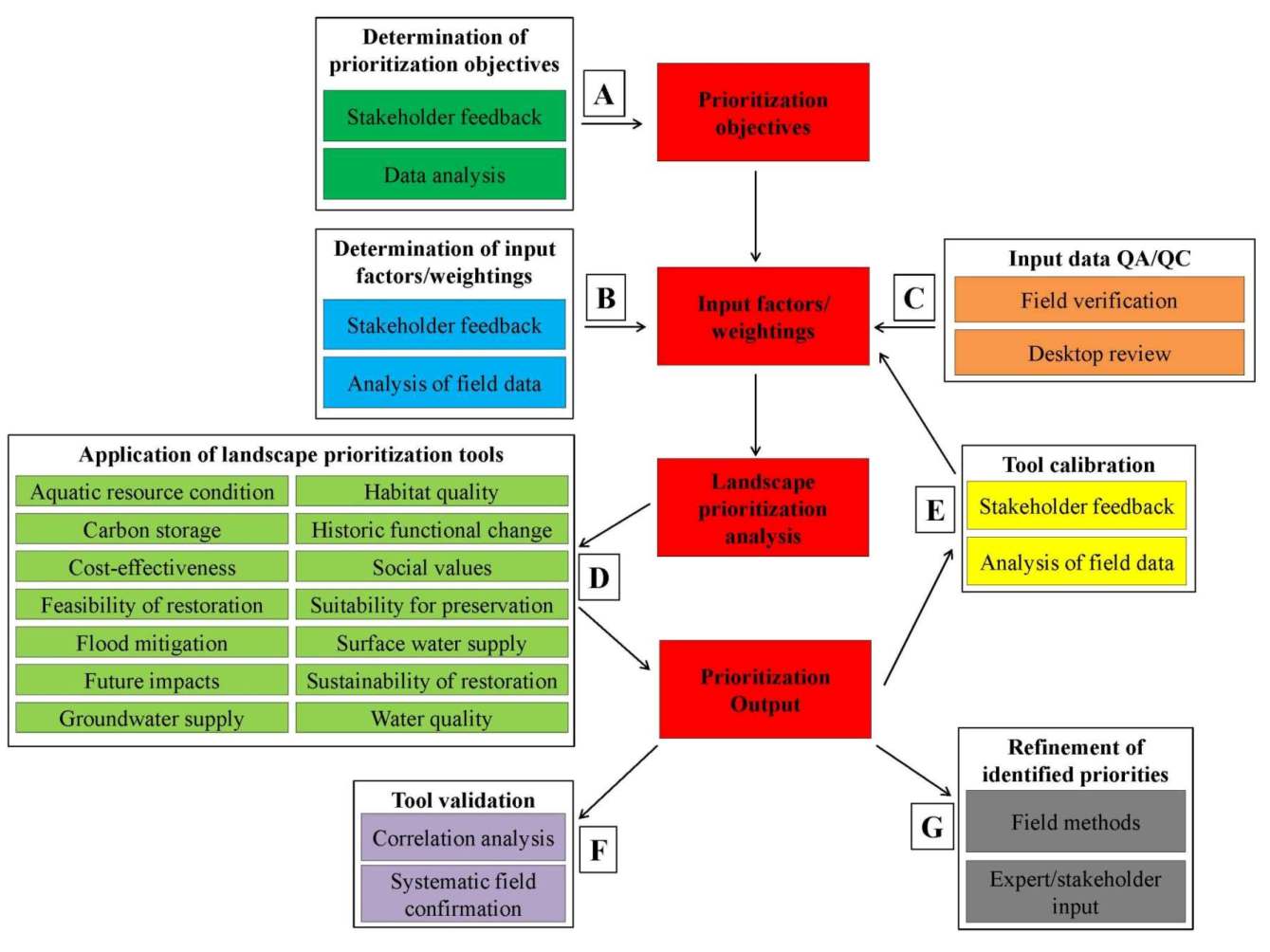A Handbook for Prioritizing Wetland and Stream Restoration and Protection Using Landscape Analysis Tools
Landscape prioritization tools - landscape metrics or indeces that generate an output corresponding to one or more prioritization objectives based on a set of data factor inputs - may be used by regulatory and non-regulatory wetland programs at the local, state, and national levels to guide prioritization of wetland protection and restoration that best meet one or more objectives. These tools can support implementation of the watershed approach, which is increasingly applied by a number of federal, state, tribal, and local programs for the planning or evaluation of aquatic resource conservation opportunities. By drawing upon existing landscape-level datasets, landscape analysis tools can help programs move from traditional approaches based on field data alone (which may by incomplete or unavailable) to analyses that can integrate watershed-based information.
Despite the many benefits of landscape prioritization tools, implementation efforts may be constrained by a lack of information. ELI published A Handbook for Prioritizing Wetland and Stream Restoration and Protection Using Landscape Analysis Tools (2013), to provide states, tribes, and local governments with information about the range of tools used by wetland programs across the country. This page and its related supporting materials are derived from the handbook. Our research draws from interviews and the review of available documentation for 30 wetland and stream programs, comprising a total of 115 prioritization tools. We identified and analyzed the four categories of tools and programs that are designed to prioritize wetland and stream restoration and protection sites.
Prioritization objectives and associated input factors/data: Prioritization objectives are the aquatic resource functions, values, condition metrics, or opportunity metrics that are assessed by a given landscape prioritization tool based on a set of input factors/data. The tools and programs examined in our study applied a wide range of prioritization factors, including:
Upstream and downstream processes: The application of landscape prioritization tools to translate data inputs into prioritization outputs is just one step in the overall prioritization process applied by most programs. The diagram below illustrates the variety of processes that may be used to derive input factors and weightings for prioritization modeling tools ("upstream" processes) and to refine or validate an output once it is obtained ("downstream" processes).
The links below provide additional information about processes applied upstream and downstream of landscape prioritization tools:
| Upstream Processes | Downstream Processes |
|---|---|
Prioritization products: The links below provide descriptions of the types of outputs produced by the landscape prioritization tools analyzed for this study.
Tool applications: The links for each of the federal and state regulatory and non-regulatory wetland programs listed below provide lists of program "fact sheets" that provided additional information about how the outputs of landscape analysis tools can be applied to meet specific regulatory/non-regulatory needs.
